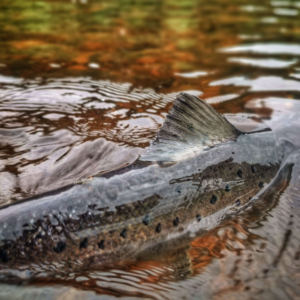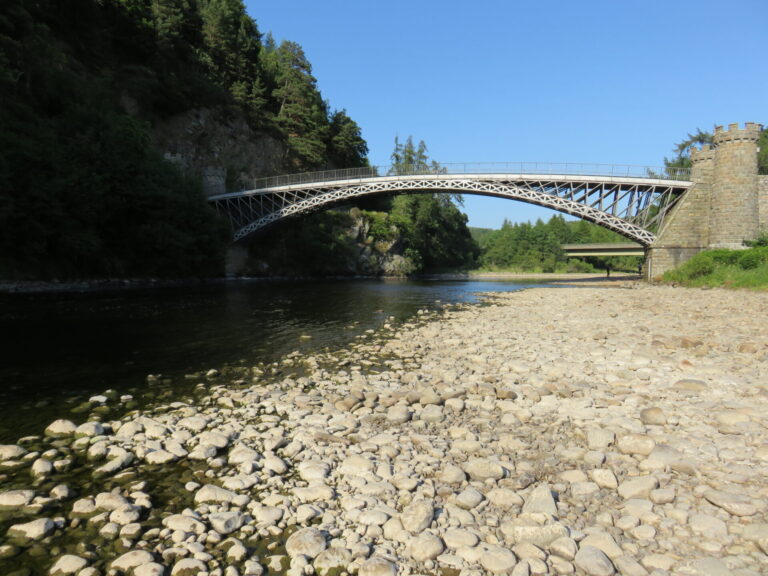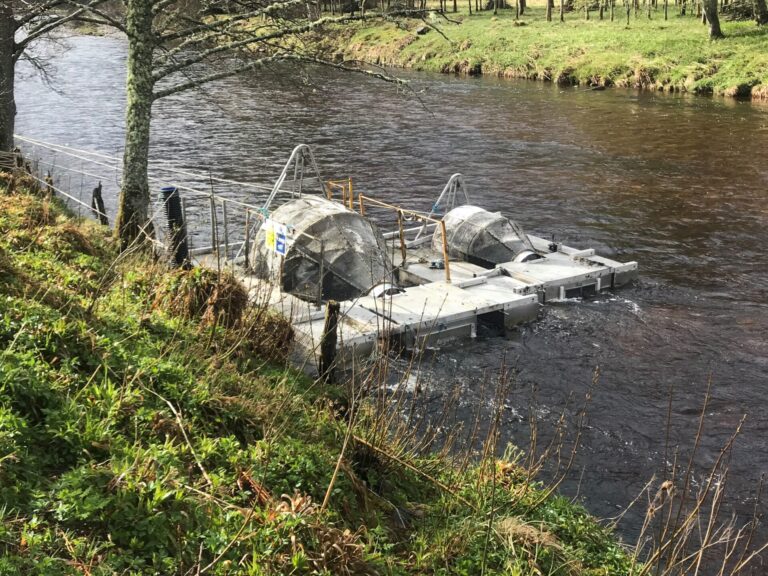River Spey Salmon Conservation
Atlantic salmon is a species now widely accepted to be in crisis. Thirty to forty years ago, of all the hundreds of thousands of salmon smolts that migrate to sea, about 25% would return to their natal rivers to spawn. Nowadays, that number is down to about 4% that return.
The reasons for this are multifactorial and caused, in part, by the effects of climate change on survival during the marine phase of the salmon’s life cycle. There is much that we can do, though, in our rivers to build resilience and transform the fortunes of this iconic species for the better.
The River Spey Partnership is engaged in a wide range of work to conserve Atlantic salmon. The Spey Fishery Board has promoted a Conservation Policy since 2003, the Spey Foundation and the Spey Fishery Board have undertaken extensive scientific research to provide the evidence to support our conservation efforts and the Spey Catchment Initiative, supported by the Spey Fishery Board, has undertaken a wide range of projects to improve the habitat for both adult and juvenile fish. All of this aims to reverse the fortunes of our iconic salmon and enable them to thrive, rather than just survive. This, in turn, provides multiple benefits to society and plays a significant role in generating a thriving rural economy.
Our Conservation Strategy
Click on a strategy above to jump to that section or scroll down below for more.
1. Catch and Release
The Spey Fishery Board launched a Salmon Conservation Policy in 2003, aimed initially at achieving the release of at least 50% of the rod-caught salmon and grilse and to protect the depleted stocks of multi-sea winter Salmon.
It has now achieved a level far higher than that originally anticipated and for the last three years, 98% of salmon and grilse caught on the River Spey have been released, so that they can go on to spawn. Indeed, of the 5,318 salmon and grilse caught during 2021, 5,198 were released to spawn. For a voluntary policy to achieve such a significant release rate is highly commendable and we are grateful to all of our proprietors, ghillies and anglers for their support for the policy.

2. Water quantity & quality
Atlantic salmon need access to cold, clean water if they are to thrive, rather than just survive. One of the greatest threats to the River Spey is increased water abstraction, which is the removal of water from the river for purposes other than hydro-electricity generation, for which water is diverted out of the catchment. Huge volumes of water are taken out of the River Spey, which currently has 51 abstraction sites consented by SEPA.
Out of all the water permitted to be abstracted or diverted out of the catchment, over 90% of it is taken from the top 13% of the Spey catchment, then diverted either to Fort William, or to the Tay, to generate hydro-electricity. In place since the 1940’s, these schemes can reduce the natural flow in the Spey by up to 24% at Boat o’Brig, near Fochabers, and by up to a massive 61% at Kingussie.
Early in 2021, The Spey Fishery Board installed a measuring and logging station at Easter Elchies to monitor water quality. This equipment was donated to the Spey by Dorenell Wind Farm after seven years of monitoring water quality, every 15 minutes, in the upper River Fiddich. The logging station was sponsored by Easter Elchies beat part-owner and Spey Board Member, Callum Robertson, and after an upgrade, it commenced logging and transmitting a range of water quality parameters. The logger records pH, oxygen saturation, temperature, river height, conductivity and turbidity. The data can be accessed, in real-time, from the link below:
https://www.hutton.ac.uk/sites/default/files/image%20s/ECN/Spey.png.
In the near future we hope to have an app that will provide easy, finger-tip access to the latest river data.
3. Removing barriers to fish passage
Atlantic salmon return to the rivers and burns where they were born in order to spawn. It is the final phase of the salmon’s life cycle. Unfortunately, mankind’s developments have sometimes created barriers which prevent them from reaching these spawning grounds. These can be culverts in burns that have been built to facilitate road construction, or perhaps weirs that have been constructed for distilleries or former mills.
The Spey Fishery Board, with the help of the Spey Catchment Initiative, has undertaken an extensive programme of barrier removal to reverse this process and enable our iconic Atlantic salmon to migrate to the upper reaches of their natal burns in order to spawn. In some cases this involves easing the obstruction, by channelling the water flow more effectively, or replacing culverts with more effective designs which are dug in to the riverbed. In other cases, the installation of a fish pass has been necessary to overcome the more challenging obstacles.
4. Hatchery and stocking
Historically, hatcheries have been operated on the Spey periodically since the late 1800’s. In the late 1960’s, the Spey Fishery Board established a hatchery at Knockando, prior to the construction of the current facility at Glenlivet in 2001. The Spey Fishery Board’s stocking policy is based upon Mitigation Stocking above man-made barriers, such as distillery weirs, which have prevented salmon from reaching their natal spawning grounds.
The Board’s policy complies with the Scottish Government’s Stocking Policy and currently sees the stocking of circa 235,000 salmon eggs and unfed fry into burns affected by these. The Board applies to the Scottish Government each year for a licence to collect adult salmon out-with the fishing season to act as broodstock, before collecting fish from the River Spey and its tributaries in October and November. These salmon are then stripped of their eggs, which are nurtured in the Hatchery, before being stocked in February/March the following year as eyed ova, or in April as unfed fry.
5. Population monitoring
The Spey Fishery Board has a long history of electro-fishing, which its Research Team undertakes to check the health of the river to monitor the young fish populations. This highlights areas that need help, provides the scientific evidence we need for the Government’s regulators and helps protect the river from harmful developments. The Board also continues to develop our knowledge of the in-river and coastal migration undertaken by Spey salmon smolts, using Rotary Screw Traps to catch, mark and re-capture them.
Support our conservation work
There are many projects currently underway or in our plans that will help to enhance the habitat along the River Spey and improve fish passage. But we need your help and support to make these projects happen.


























